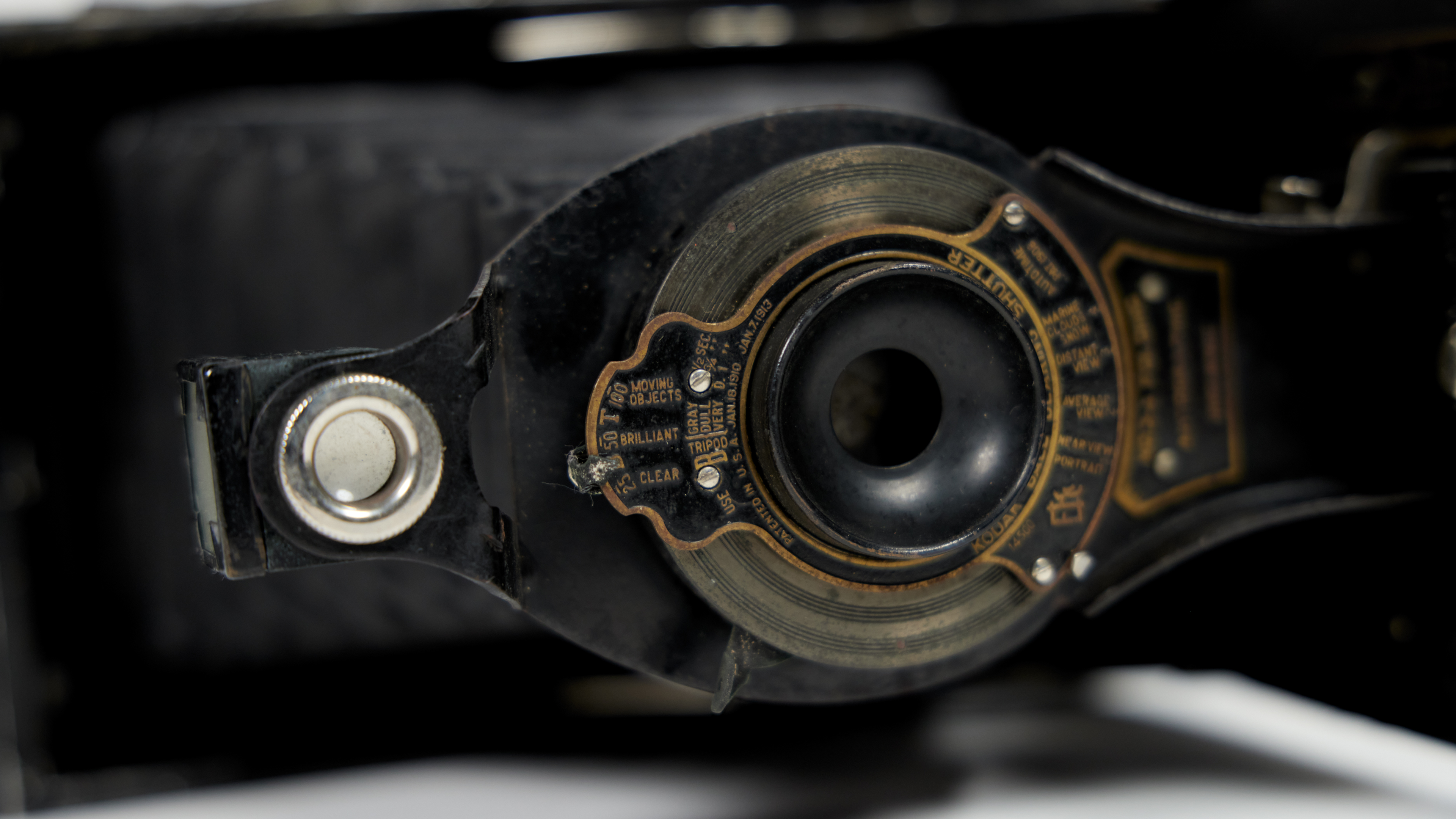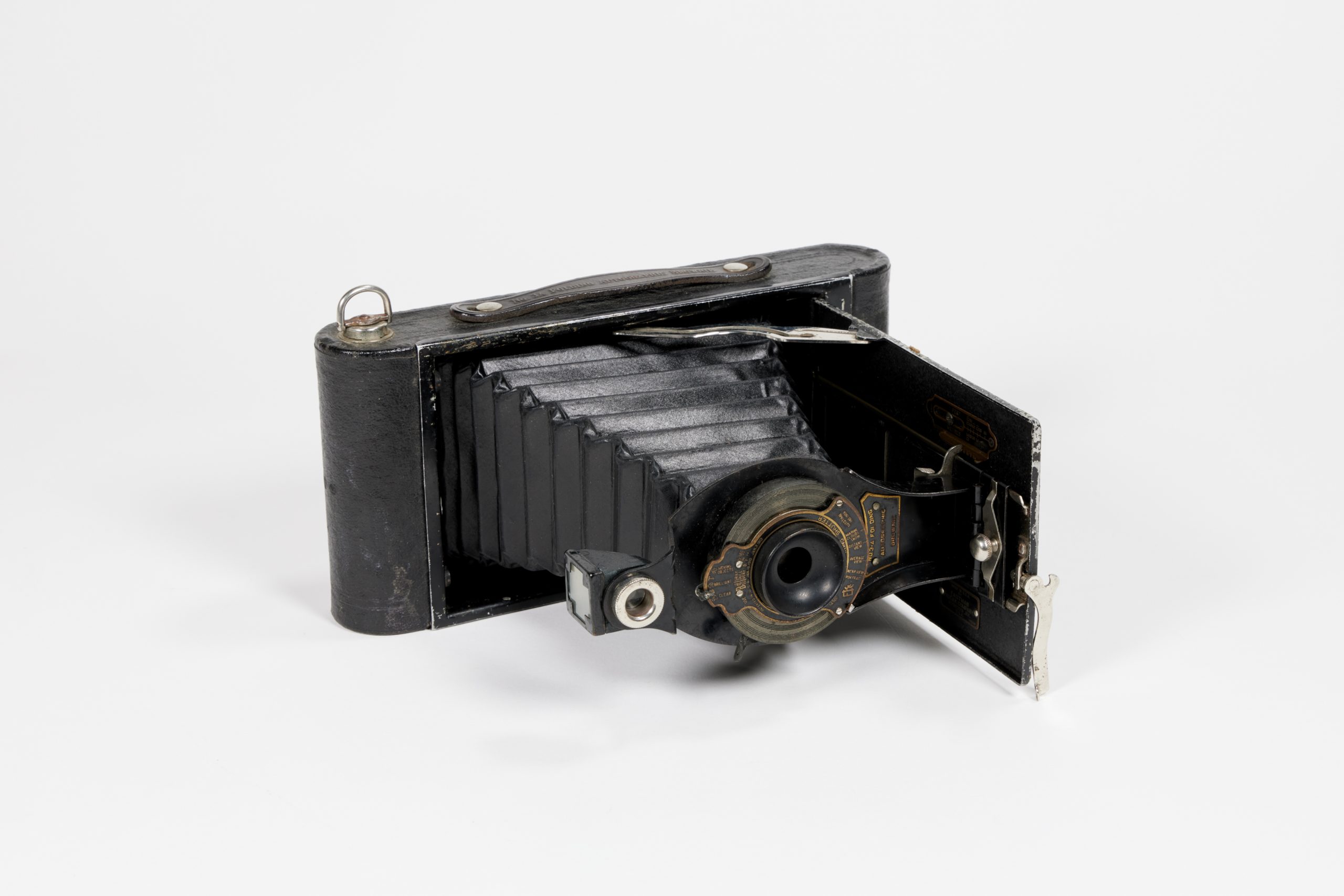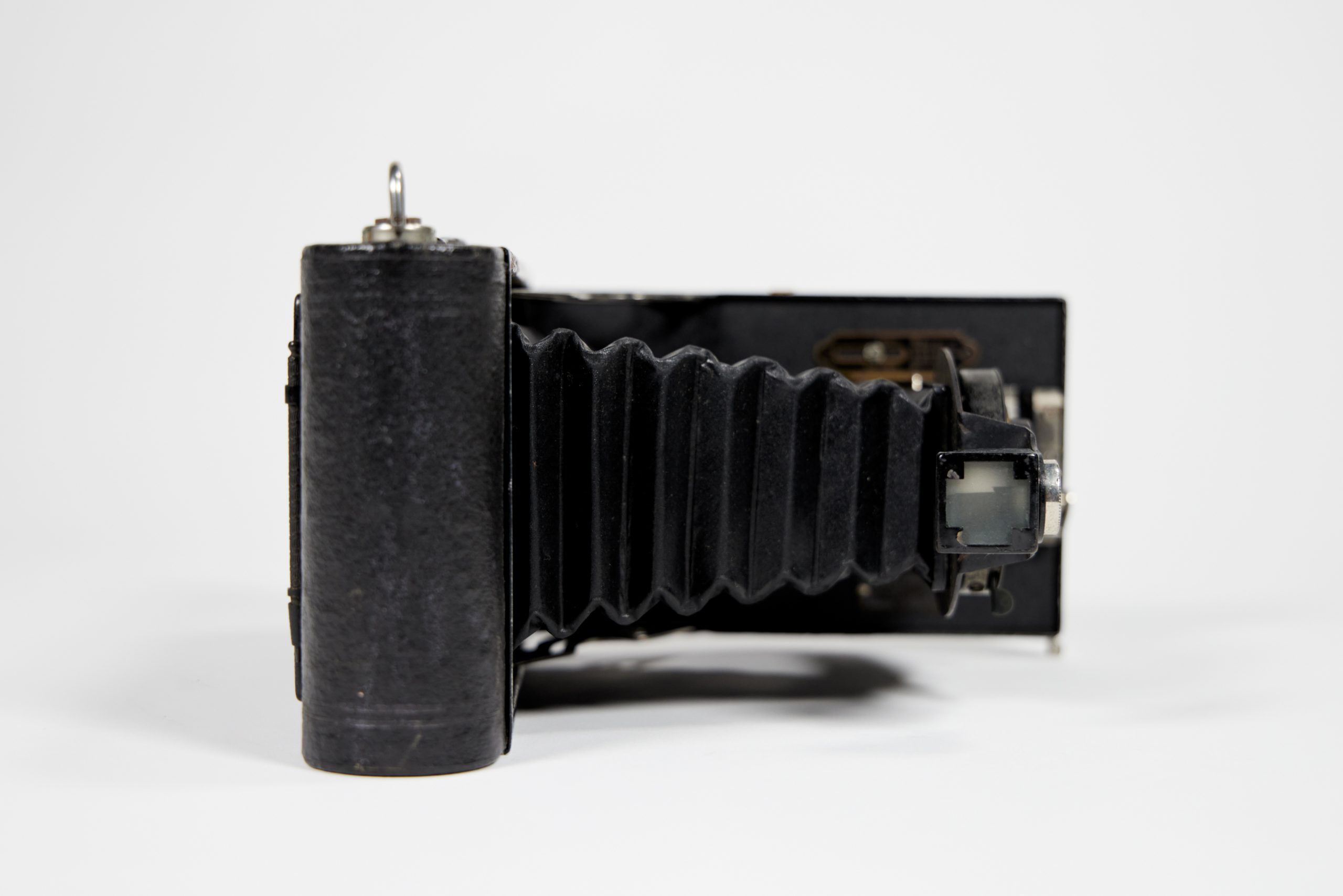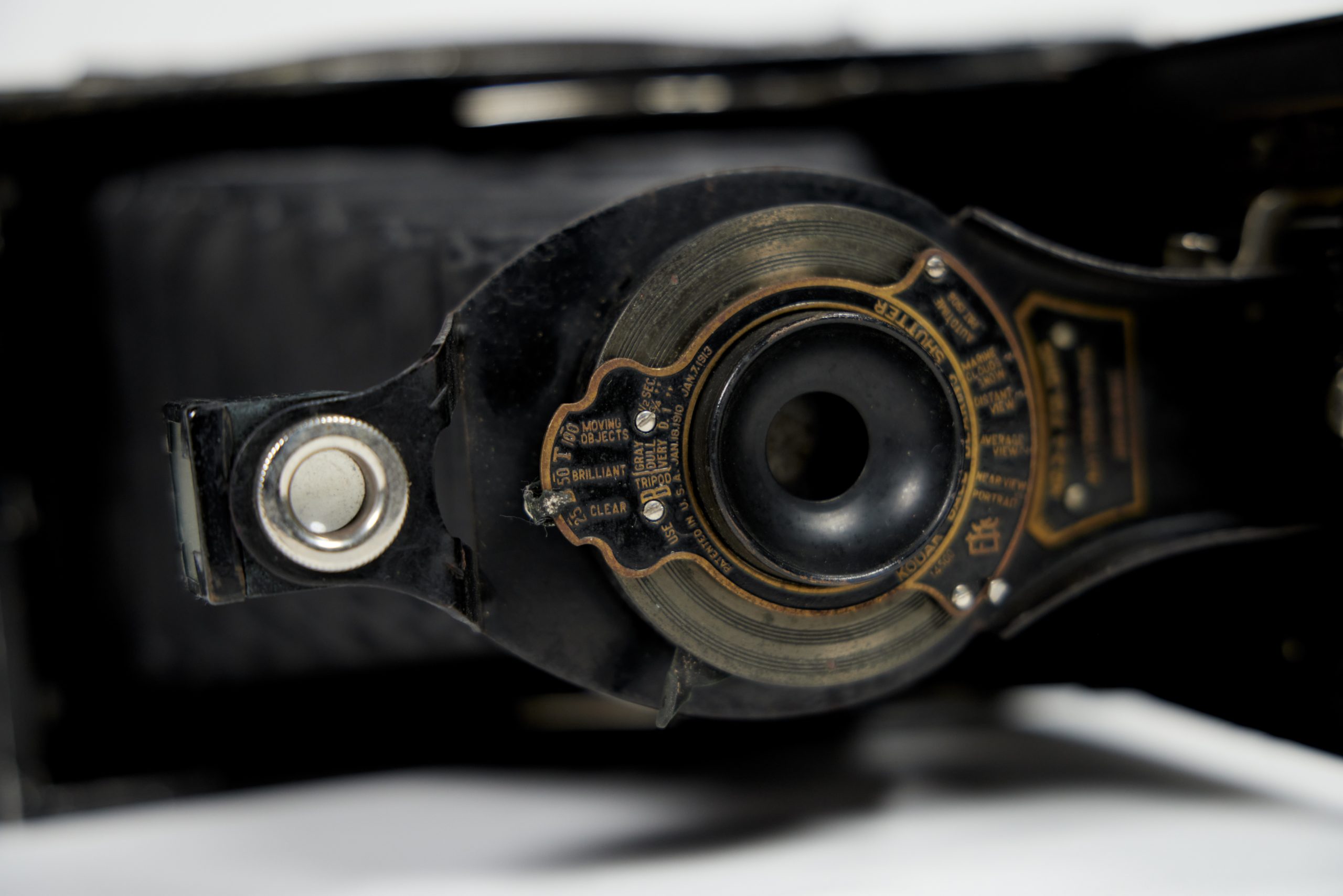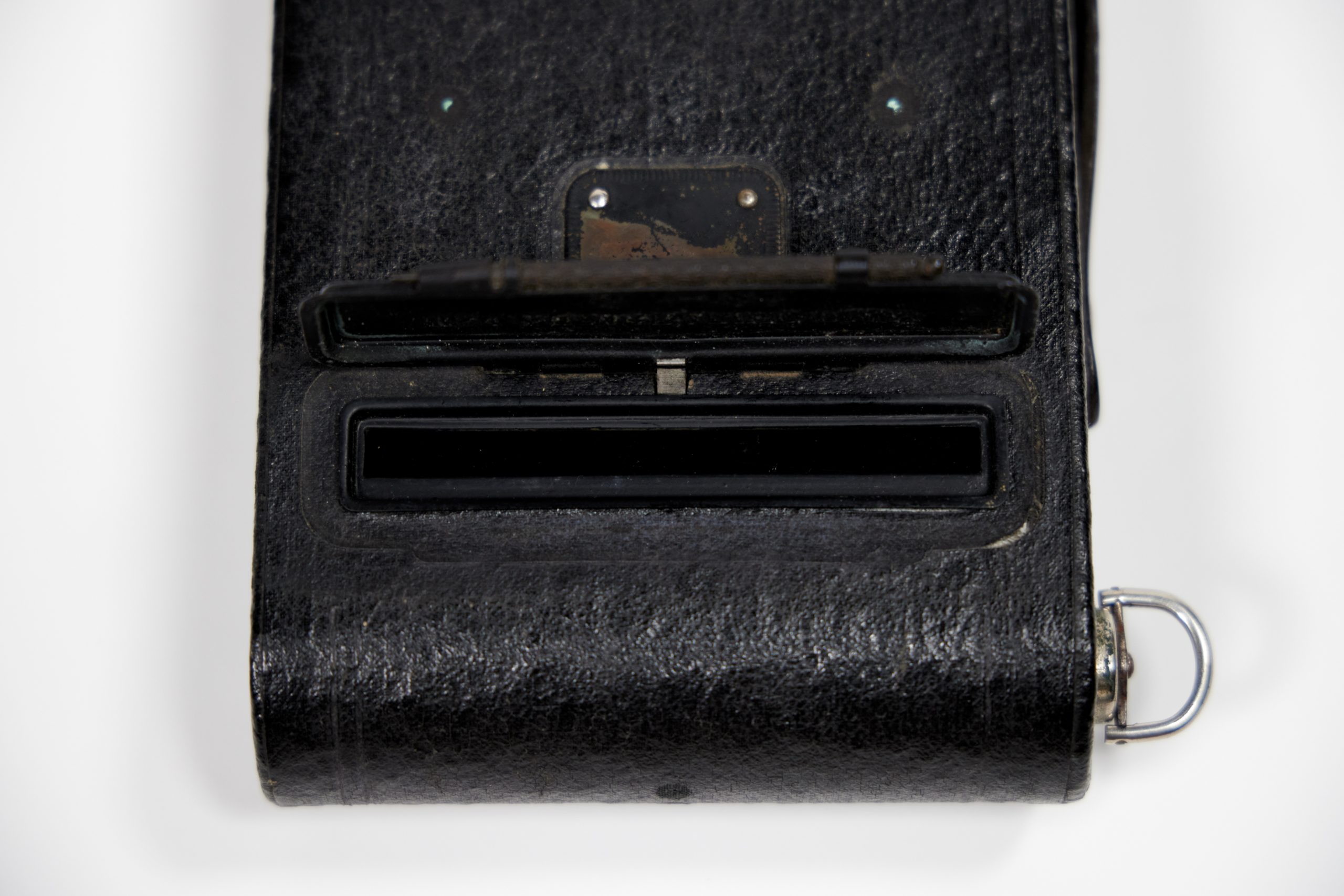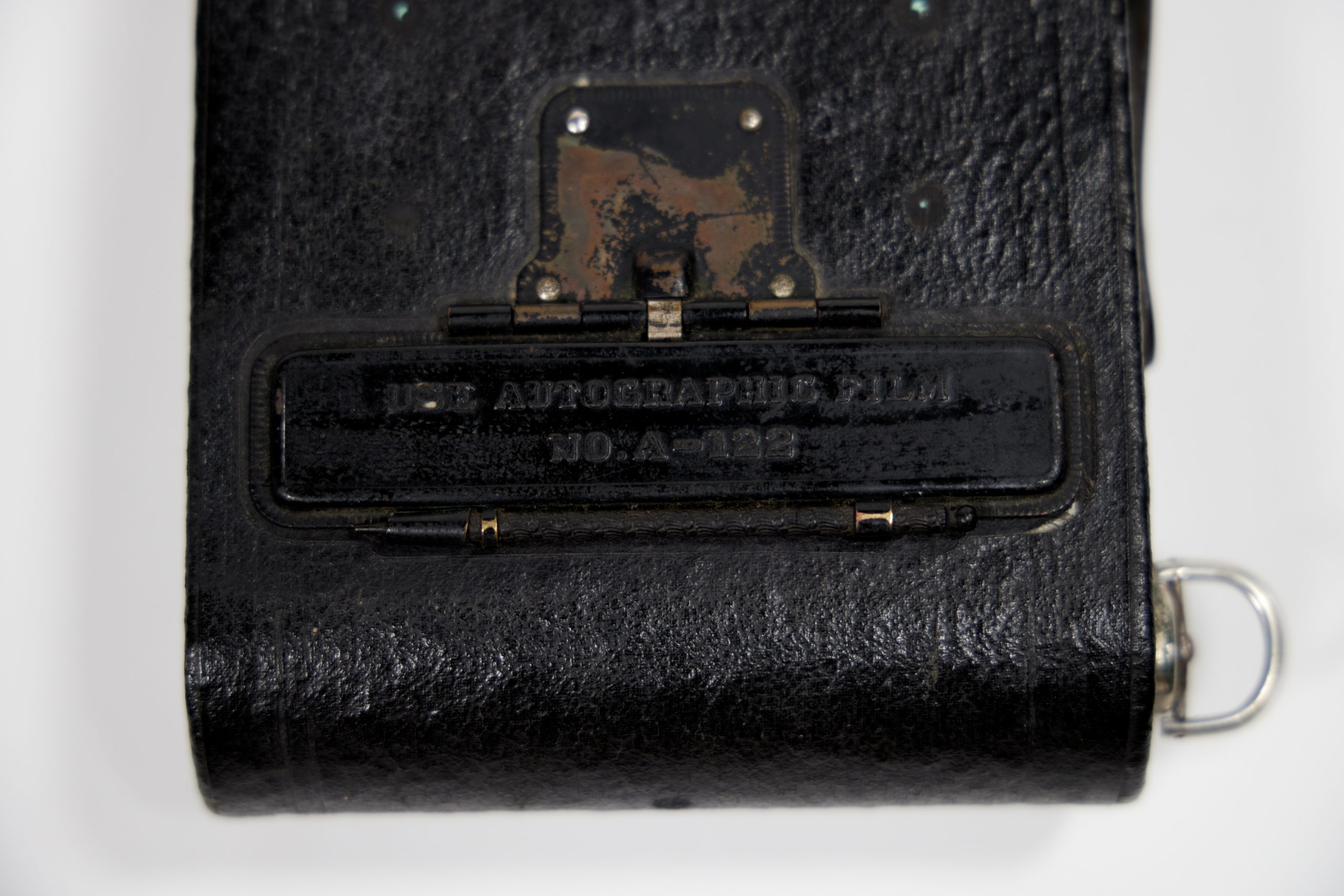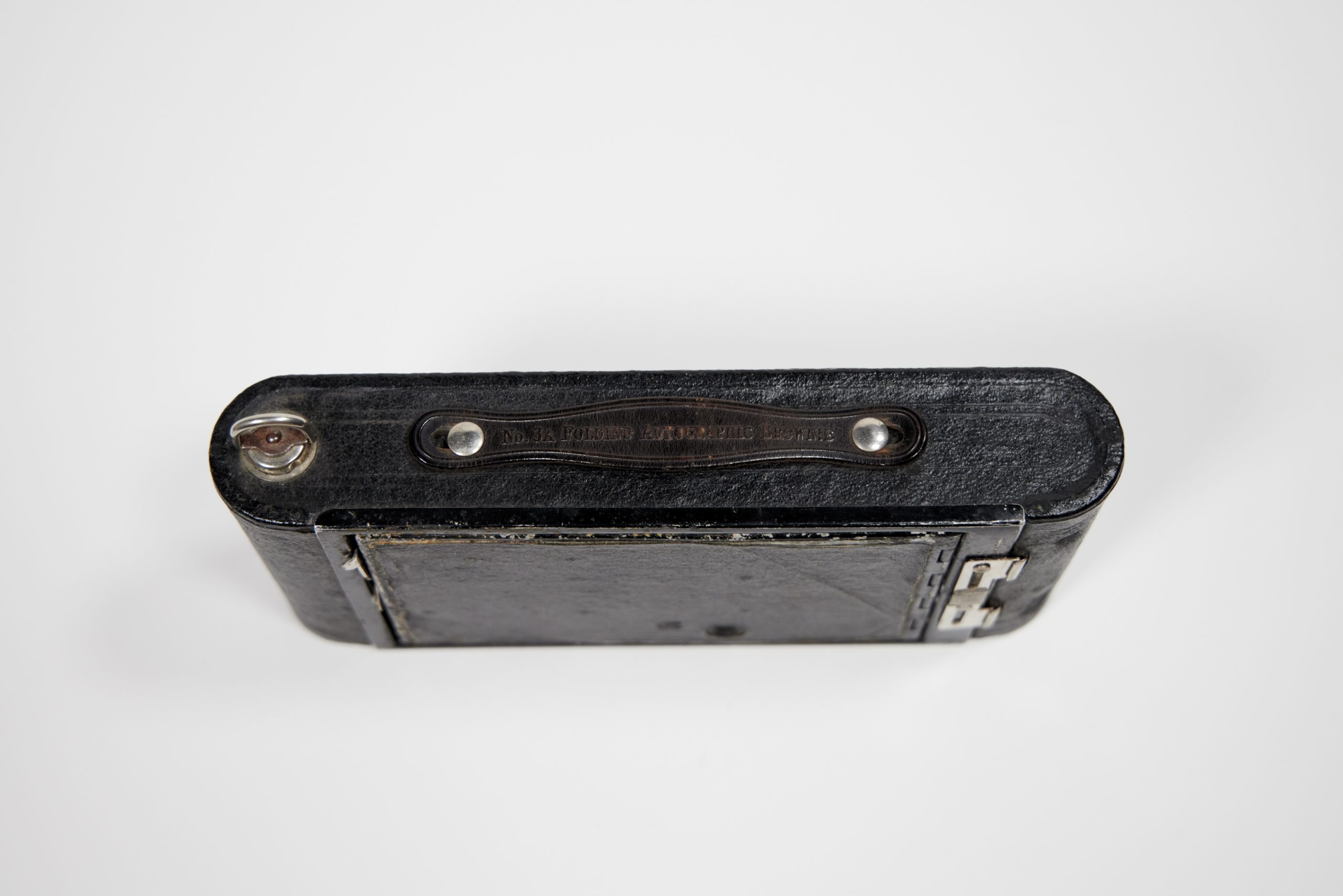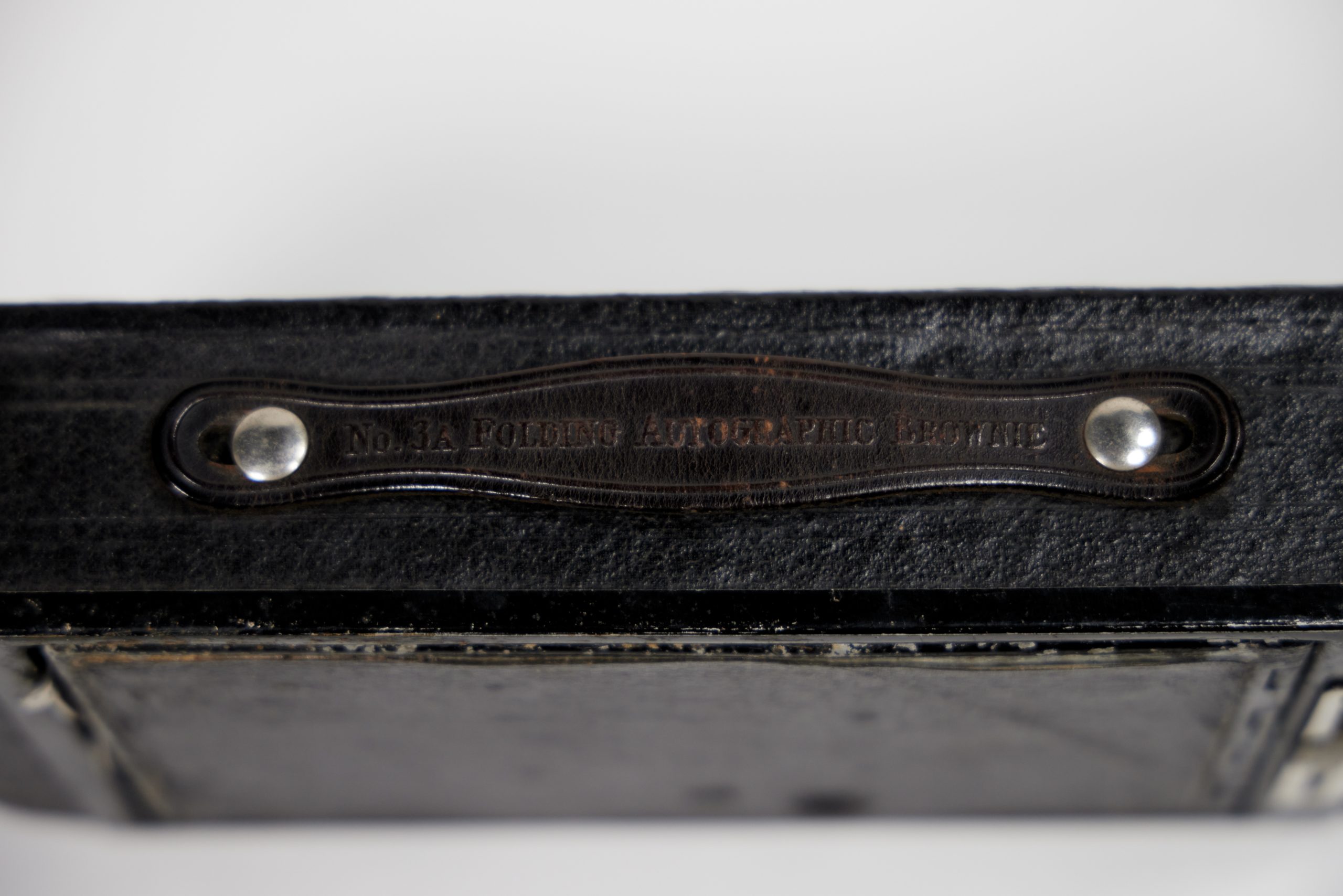Through a New Lens
Innovating Amateur Photography
Prior to 1900, photography was largely an activity for experts. Cameras were bulky, complicated, required hazardous chemicals, and perhaps most importantly, were expensive. However, when Kodak introduced the ‘Brownie,’ a low-priced, point-and-shoot camera that year, it well and truly changed the game.
Photography was finally within the reach of amateurs and the low price allowed the middle class to step behind the camera and start documenting their lives with their own snapshots. With foldable models like this one, the Brownie became even more compact and convenient.
This ‘Autograph’ model of the folding Brownie had an extra feature. A small narrow door on the back of the camera could be opened, allowing the photographer to make notes at the time of taking the photo.
Today, digital cameras do the hard work for us, calculating available light and the most suitable exposure time for a perfect image. But photographers using early analogue film cameras had to guess these calculations themselves, a skill that improved through trial and error.
A film roll was often developed some time after taking the photo, so it could be tricky to remember what camera settings had been used for a particular shot. This camera allowed the information to be recorded directly onto a paper strip on the film, which helped amateur photographers to see the results of different settings and learn lessons from every roll of film.


